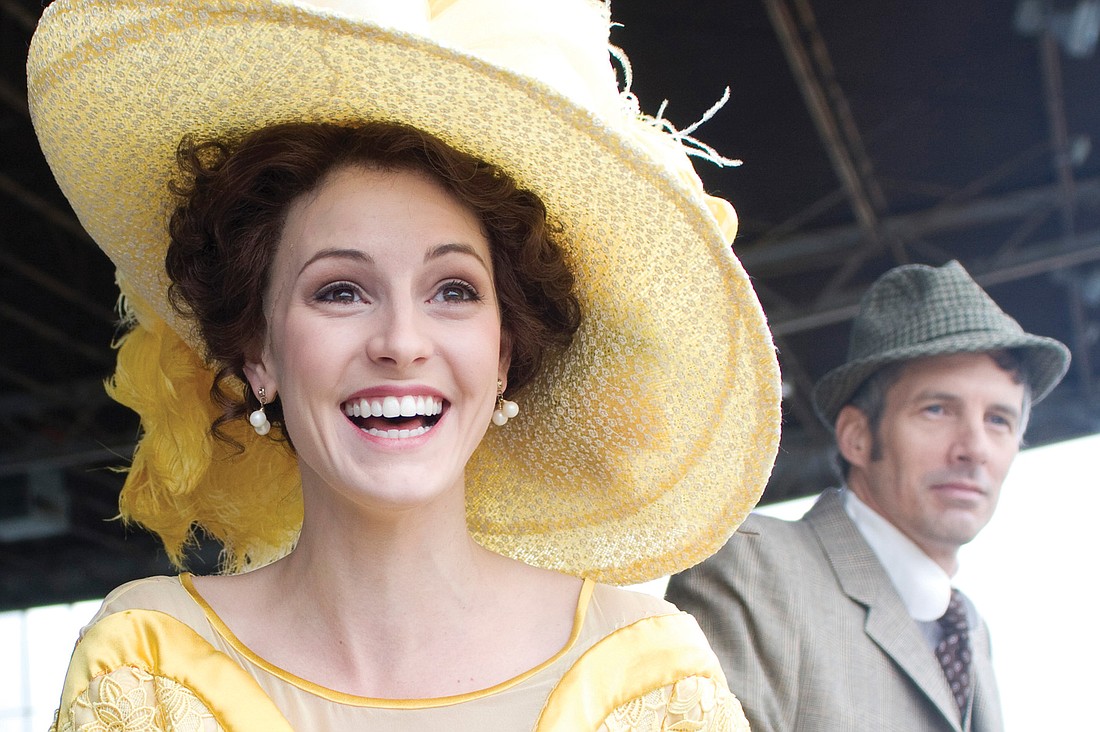- April 19, 2024
-
-
Loading

Loading

Sometimes less is more, and when Lerner and Loewe authorized a chamber version of their hit show, “My Fair Lady,” cutting the cast of 45 to 19 and the orchestra of 27 to two pianists, they knew what they were doing. So does Director Frank Galati, who’s made a gem out of a work we thought couldn’t be improved.
We attended the first preview but can’t imagine how the show could get any better. Yes, we will be going back to see it again now that it’s opened, but we didn’t want to wait to tell you about it.
A friend of mine, an educated, erudite woman who knows what she’s talking about, was somewhat surprised when I suggested she see the Asolo’s production of “My Fair Lady.”
“Oh, I’ve seen that so many times,” she said. “Why would I see it again?”
I told her, and now I’m telling you, this is not your mother’s “My Fair Lady.” It’s been honed and polished into a fresh, new look at a beloved friend.
It took us about eight measures to get used to the sound of two pianists (Doug Peck, who is also the music director, and Ian Weinberger) rather than an orchestra. They played the familiar Overture, and, then, as the curtain opened, their piano platform gently sank out of sight, allowing us to see and hear the characters on stage as we’d not heard or seen them before.
Jeff Parker, who looks a bit like Richard Geer and actually sings quite beautifully at times, turns in a multi-dimensional Henry Higgins you want to hug and shake. After all, why is this attractive, youthful man with a brilliant mind so set in his ways? After a while, he starts asking himself the same question, but he’s so flummoxed and befuddled at the thought of liking, no less loving, a young woman — he’s simply stumped.“Why Can’t a Woman be More Like a Man?” he asks of his friend and colleague, Col. Pickering (played by a likable and down-to-earth Joel Hatch). We know all the clever inner rhymes and reasons Higgins is spouting, but Parker makes them new again.
Andrea Prestinario, the transformed and transforming Eliza Doolittle who has always been a lady but didn’t know how to pronounce it properly, is both charming and disarming. Like the actresses in the role before her, she takes her Eliza off the street and into the ballroom with elegance and ease. But she takes Eliza further with a strength of character that makes her a lady fit for a capital “L.”
Freddy Eynsford-Hill, of course, falls head over heels in love with her and, in the person of Sean Effinger-Dean, we see all his exuberance and joy simply in being “On the Street Where You Live.” Peggy Roeder’s Mrs. Higgins (Henry’s mother) brings much more presence to this production than the original, making her role into one of great importance to each of the characters. Andrew Boyer’s Alfred Doolittle, Eliza’s father, does a lot as an eccentric and endearing man-of-the-coal-bin with the heart of gold, and he shows us exactly how Eliza got her backbone. His Doolittle has a depth of character that goes beyond Doolittle as a song-and-dance man. And Penny Slusher’s Mrs. Pearce manages to be understanding and questioning enough to make us want to have her help us manage our own affairs, should she ever leave the employ of Mr. Higgins.
This chamber version of “My Fair Lady” is grand and eloquent. Russell Metheny’s cleverly designed sets easily transform the stage from the outside of Covent Garden to a warm, masculine study to the races at Ascot and an embassy ballroom. The costumes created by Mara Blumenfeld are beautifully apt for every scene, and James D. Sale’s lighting enhances the characters and their setting, while Josh Rhodes’ choreography is fun and clever.
Best, especially for those of us who attended the original production on Broadway, which managed to be heard without amplification, was Kevin Kennedy’s sound design; it didn’t over-amplify anyone and made the characters sound as if they were real people and not hullabaloos coming out of surround-sound speakers.
It was a little strange seeing Bryan Torfeh, who’s usually doing lead roles, appearing as the Third Cockney and the oily Zoltan Karpathy, but he was a marvelous ensemble player, as were all the others in this beautifully crafted piece.
This is probably my 15th or 16th time with “My Fair Lady.” But this one (and, of course, my first time seeing it at the age of 12) are the ones I’ll remember.